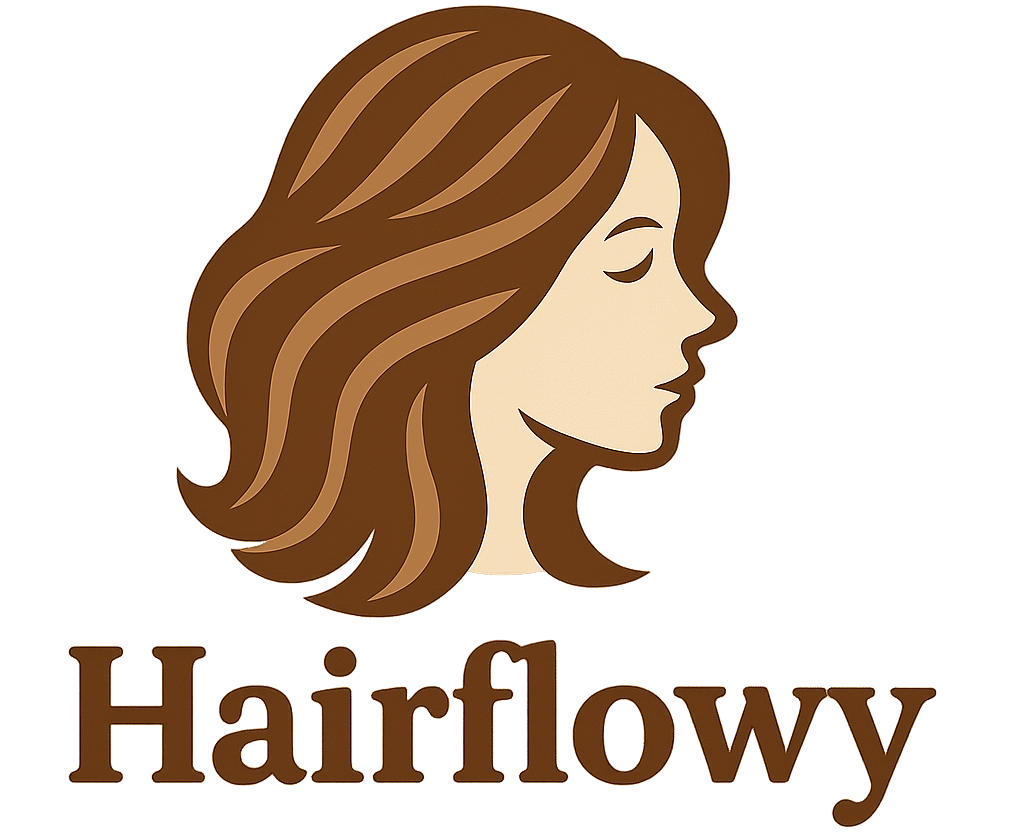Wavy hair is one of nature’s most versatile gifts yet many of us struggle to find the perfect cut that enhances our natural texture. We’ve all been there – dealing with frizz one day and lifeless waves the next while searching for that elusive hairstyle that works with our hair’s natural movement rather than against it.
The secret lies in choosing cuts specifically designed for wavy hair patterns. Natural wavy haircuts aren’t just trendy – they’re game-changers that can transform your daily routine from a styling nightmare into an effortless experience. When you work with your hair’s natural grain you’ll discover waves that bounce with life and require minimal maintenance.
We’re about to explore the most flattering cuts for wavy hair that’ll have you embracing your texture like never before. From layered bobs that add movement to long cuts that prevent the dreaded triangle shape these styles will revolutionize how you think about your waves.
Understanding Your Natural Wave Pattern Before Choosing a Cut
We need to analyze our hair’s unique characteristics before selecting any wavy haircut to ensure the best results. Knowing our wave pattern helps us choose cuts that work with our natural texture rather than against it.
Identifying Type 2A, 2B, and 2C Wave Patterns
Type 2A waves appear as loose, gentle S-shaped curves that form primarily at the ends of hair strands. We often see this pattern in hair that lies relatively flat against the scalp with subtle movement near the bottom. Fine to medium hair density typically accompanies this wave type, making it the most fragile of the wavy patterns.
Type 2B waves create more defined S-patterns that begin closer to the roots and extend throughout the hair shaft. Our hair shows more volume and bounce with this pattern, often requiring products to enhance definition. Medium thickness characterizes most 2B hair, giving us more styling versatility than 2A patterns.
Type 2C waves produce strong, pronounced curves that start near the scalp and create important volume. We notice these waves hold their shape well and resist straightening attempts. Coarse hair texture usually accompanies this pattern, making it the most resilient wave type but also the most prone to frizz.
Assessing Your Hair Density and Porosity
Hair density refers to how many individual strands we have per square inch of scalp. Low density means we can easily see our scalp through our hair, while high density creates thick, full coverage. Medium density falls between these extremes and represents the most common hair type.
Hair porosity determines how well our strands absorb and retain moisture. Low porosity hair repels water initially but holds moisture once saturated. High porosity hair absorbs products quickly but loses moisture just as fast. Normal porosity maintains balanced moisture levels with proper care.
We can test porosity by placing a clean strand in water: it sinks quickly with high porosity, floats with low porosity, or slowly sinks with normal porosity. Understanding these factors helps us select cuts that enhance our hair’s natural volume and manageability.
Recognizing Face Shape Compatibility
Round faces benefit from cuts that add height and length to balance facial proportions. We recommend avoiding cuts that add width at cheek level, instead choosing styles with volume at the crown. Long layers and side parts work exceptionally well for round face shapes.
Square faces need cuts that soften angular jawlines through curved lines and gentle layers. We suggest avoiding bluntly cut bobs that emphasize jaw width. Soft, face framing layers and side swept bangs create the most flattering look.
Oval faces work well with most wavy haircut styles since they have balanced proportions. We can experiment with various lengths and layer placements without major concerns. Both center and side parts complement oval face shapes effectively.
Heart shaped faces require cuts that balance wider foreheads with narrower chins. We recommend choosing styles that add volume around the jawline while minimizing width at the temples. Chin length bobs and longer cuts with layers starting below the cheekbones work best.
Classic Bob Cuts That Enhance Natural Waves

Classic bob cuts offer the perfect foundation for showcasing natural wave texture while maintaining a polished, sophisticated look.
The Blunt Bob for Defined Wave Structure
Blunt bobs create clean lines that highlight your natural wave pattern without overwhelming it. This precise cutting technique involves trimming hair straight across at jawline length, which allows your waves to maintain their structure and definition. The even weight distribution helps prevent frizz while creating a sleek silhouette that works especially well for 2B and 2C wave types.
Weight placement becomes crucial with blunt bob cuts for wavy hair. The uniform length creates a solid foundation that supports your waves’ natural bounce and movement. This style requires minimal styling since the cut itself does most of the work in improving your wave definition.
Maintenance stays relatively low with blunt bob cuts. Regular trims every 6-8 weeks help maintain the clean lines that make this style so effective for wavy hair textures.
Layered Bob for Added Movement and Volume
Layered bobs distribute weight evenly throughout your hair, allowing natural waves to flow freely. Strategic layering removes bulk from thick wavy hair while adding body to finer textures. The varying lengths create dimension and prevent your waves from appearing flat or weighed down.
Movement increases significantly when layers are added to bob cuts. Each layer catches light differently, creating visual interest and improving the natural texture variations in wavy hair. This technique works particularly well for those with 2A waves who want more definition and body.
Volume gets an instant boost through proper layering techniques. Shorter layers underneath provide lift at the roots while longer layers maintain length and weight where needed. The result is a bouncy, ever-changing cut that showcases your waves’ natural beauty.
Asymmetrical Bob for Modern Wave Definition
Asymmetrical bobs add contemporary edge while improving natural wave patterns. This cutting technique creates visual interest by varying lengths from one side to the other, with the longer side typically falling 2-3 inches below the shorter side. The uneven lengths create movement that complements wavy hair’s natural flow.
Modernizing wave definition becomes effortless with asymmetrical cuts. The contrasting lengths create a ever-changing silhouette that moves beautifully with natural waves. This style works especially well for those wanting to update their look while maintaining their wave texture.
Styling versatility increases with asymmetrical bob cuts. You can emphasize the dramatic angle by tucking the shorter side behind your ear or create a softer look by allowing both sides to fall naturally. The cut itself provides enough interest that minimal styling products are needed to achieve a polished appearance.
Long Layered Cuts That Embrace Natural Texture

Long layered cuts work beautifully for wavy hair by creating movement and definition that celebrates your natural texture. These versatile styles enhance wave patterns while preventing the flat, weighed-down look that can occur with blunt cuts.
Face-Framing Layers for Enhanced Wave Flow
Face-framing layers strategically concentrate shorter pieces around your face while maintaining length throughout the rest of your hair. These targeted layers create dimension that highlights your facial features while allowing your waves to flow naturally from root to tip. We recommend this approach because it adds visual interest without compromising the overall length that many wavy-haired individuals prefer.
Styling becomes effortless when you apply a light hold hairspray to damp hair before air drying. This technique keeps the face-framing pieces in position without creating stiffness or weighing down your natural wave pattern. The layers will naturally enhance your wave flow as they dry, creating a polished look with minimal effort.
Long Shag Cuts for Effortless Wavy Volume
Long shag cuts combine choppy layering techniques with maintained length to create incredible volume and texture for wavy hair. This style works particularly well because the varied layer lengths allow your waves to stack and build upon each other, creating natural fullness without requiring extensive styling products.
Choppy layers throughout the cut prevent your hair from appearing too uniform while still maintaining a cohesive shape. The strategic placement of these layers ensures that your waves have room to move and bounce, which is essential for achieving that effortless, lived-in look that shags are known for.
Application of curl cream to damp hair followed by air drying maximizes the volume potential of this cut. The cream enhances your natural wave formation while the varied layer lengths create multiple points of lift and movement throughout your hair.
Curtain Bangs with Long Layers
Curtain bangs paired with long layers create a balanced combination that perfectly complements wavy hair textures. The soft, center-parted bangs frame your face gently while the long layers maintain the flowing movement that wavy hair naturally wants to achieve.
This pairing works effectively because curtain bangs don’t fight against your natural wave pattern like blunt bangs might. Instead, they work with your hair’s natural tendencies, creating a soft frame that enhances rather than competes with your waves.
Detangling spray becomes your best friend with this style, as it prevents frizz formation while defining both the bangs and the surrounding layers. Apply the spray to damp hair and allow everything to air dry naturally for the most authentic, effortless result that showcases your natural wave pattern.
Medium-Length Cuts Perfect for Wavy Hair

Medium length cuts offer the perfect balance between manageability and style for wavy hair textures. These cuts work exceptionally well because they provide enough weight to control frizz while maintaining the movement that makes waves beautiful.
The Lob (Long Bob) for Versatile Wave Styling
Long bobs deliver the ideal solution for those who want longer hair without extensive maintenance requirements. This cut enhances natural waves by creating a relaxed, effortless appearance that works with your hair’s natural texture rather than against it.
Styling flexibility makes the lob particularly appealing since you can achieve different looks with or without heat tools depending on your desired texture and shine level. Air drying works beautifully with this cut, allowing your natural wave pattern to shine through while minimizing heat damage.
Texturizing sprays become your best friend with a lob, improving wave definition while adding the perfect amount of volume. We recommend applying these products to damp hair before air drying for optimal results.
Shoulder-Length Layers for Balanced Volume
Shoulder length layers distribute volume evenly throughout your hair, preventing that bulky appearance that can overwhelm wavy textures. These strategic layers create movement without sacrificing the fullness that makes wavy hair so gorgeous.
Curtain bangs pair beautifully with shoulder length layers, adding face framing elegance and extra texture to complement your natural waves. This combination creates a polished look that requires minimal styling effort.
Volume distribution becomes more manageable with this cut since the layers prevent weight from pulling your waves downward. Each layer works to support the others, creating a cohesive shape that enhances your natural texture.
Wavy Shag for Textured Movement
Wavy shags add incredible texture and movement through choppy layers that frame your face while improving your natural wave pattern. This versatile cut embraces natural texture without requiring excessive styling time or products.
Choppy layering creates the signature shag look while allowing your waves to stack and bounce naturally throughout the day. Face framing elements in this cut highlight your best features while working harmoniously with your wave structure.
Curl creams and light hold styling products work exceptionally well with wavy shags, helping define your waves without creating that greasy appearance many people want to avoid. These products enhance the textured movement that makes this cut so appealing for wavy hair types.
Short Wavy Haircuts That Maximize Natural Texture

Short wavy haircuts offer the perfect solution for embracing your natural texture while maintaining effortless style. These cuts work with your waves rather than against them, creating definition and movement that highlights your hair’s natural beauty.
Pixie Cuts with Textured Layers
Pixie cuts with textured layers transform fine or thick wavy hair into a voluminous, defined masterpiece. Strategic layering throughout the cut adds instant body and creates separation that enhances each wave’s natural pattern. We recommend this style for those seeking maximum impact with minimal styling effort.
Textured layers in pixie cuts work particularly well because they frame the face beautifully while preventing the flatness that can occur with traditional short cuts. The varying lengths create natural lift at the roots, giving your waves the perfect foundation to spring into their ideal shape. Styling becomes as simple as scrunching with a lightweight mousse and air drying for effortless texture.
Short Wavy Bob with Side-Swept Bangs
Short wavy bobs with side-swept bangs create sophisticated elegance that emphasizes your natural wave pattern perfectly. This versatile cut offers the ideal length for showcasing waves while maintaining professional polish and easy maintenance. Side-swept bangs add softness and movement that complements the bob’s structured foundation.
Wave definition becomes enhanced through the bob’s blunt perimeter, which creates a clean line that prevents frizz while allowing natural texture to shine. The side-swept bangs blend seamlessly with your waves, creating a cohesive look that requires minimal daily styling. We find this combination works exceptionally well for 2B and 2C wave types that need structure without weight.
Tousled Crop Cuts for Low-Maintenance Waves
Tousled crop cuts deliver maximum texture through short, choppy layers that instantly enhance natural wave definition. These cuts work beautifully for both thick and fine wavy hair by creating strategic volume placement and removing excess weight. The choppy layering technique adds instant movement that makes styling virtually effortless.
Low maintenance becomes the key benefit of tousled crops, as they’re designed to look perfectly imperfect with minimal effort. Texturizing spray applied to damp hair followed by air drying creates the ideal tousled finish that enhances your natural wave pattern. This cut embraces the relaxed, lived-in look that makes wavy hair appear effortlessly chic and full of personality.
Styling Tips to Maintain Your Natural Wavy Haircut

Getting the perfect wavy haircut is just the beginning—proper maintenance techniques help preserve your waves’ natural beauty while minimizing frizz and damage.
Heat-Free Styling Techniques
Air drying remains the most effective method for preserving your natural wave texture without compromising hair health. We recommend allowing your hair to dry naturally rather than using blow dryers or other heat styling tools that can disrupt wave patterns and cause frizz.
Loose wrapping techniques work exceptionally well for defining waves without applying heat. Gently twist sections of damp hair around your fingers or loosely braid larger sections to encourage natural wave formation as your hair dries.
Scrunching damp hair with your hands helps enhance existing wave patterns while adding volume. Apply this technique by cupping sections of hair in your palms and gently pressing upward toward your scalp, allowing waves to form naturally.
Plopping with a microfiber towel or cotton t-shirt removes excess moisture without disturbing wave structure. This gentle drying method involves wrapping your hair in the fabric and leaving it for 10-15 minutes to absorb water while maintaining wave definition.
Product Recommendations for Wave Enhancement
Leave-in conditioners provide essential moisture and protection for wavy hair throughout the day. We suggest using products like Miracle Leave-in Plus Keratin for damaged hair or Potion Miracle Leave-In for extra-dry hair to maintain hydration and enhance wave definition.
Moisturizing creams and oils create the foundation for healthy, defined waves by adding necessary hydration. Hair milks, butters, and curl creams work particularly well for improving moisture levels while defining natural wave patterns without weighing hair down.
Wave-defining gels offer hold without stiffness when applied to damp hair. Look for lightweight formulas that provide structure while allowing natural movement and bounce in your waves.
Sea salt sprays add texture and enhance natural wave patterns when misted onto damp or dry hair. These products create beachy, tousled effects that complement the relaxed nature of wavy hairstyles.
Night Routine for Preserving Wave Pattern
Satin pillowcases reduce friction between your hair and bedding, preventing frizz and maintaining wave structure overnight. We recommend making this simple switch to protect your waves while you sleep and wake up with more defined texture.
Gentle drying before bed sets the foundation for well-preserved waves the next morning. Use a microfiber towel or soft cotton t-shirt to gently blot excess moisture from freshly washed hair rather than rubbing vigorously with regular towels.
Loose protective styles like silk scrunchies or satin hair wraps keep waves intact during sleep. Avoid tight ponytails or braids that can create dents and disrupt your natural wave pattern.
Refreshing sprays applied in the morning help revive flattened waves and add moisture back to your hair. Mix water with a small amount of leave-in conditioner in a spray bottle for an easy morning touch-up routine.
Professional Maintenance for Natural Wavy Haircuts

Professional maintenance keeps your natural wavy haircuts looking fresh and healthy between salon visits. We’ll help you establish the right care routine and communication strategies to maintain your waves at their best.
Trimming Schedule for Healthy Wave Growth
Schedule trims every 8–12 weeks to maintain your wavy haircut’s shape and promote healthy growth. Regular trimming prevents split ends from traveling up the hair shaft, which can make waves appear frizzy and unrefined. Removing damaged ends improves the overall appearance of your natural waves and makes daily styling significantly easier.
We recommend booking your next appointment before leaving the salon to maintain consistency in your wave pattern. Layered cuts like shags and wolf cuts benefit from more frequent trims at the 8-week mark to preserve their textured shape. Longer wavy styles can extend to 12 weeks between cuts while still maintaining their structural integrity and wave definition.
Communication Tips for Your Hairstylist
Clearly communicate your hair texture type (2A, 2B, or 2C) and daily styling routine during your consultation. Request low-maintenance options such as layered shags, wolf cuts, or choppy layers that work with your natural wave pattern rather than against it. Specify your desired maintenance level and ask for guidance on managing frizz while improving wave definition.
Bring photos of styles you like to ensure clear understanding between you and your stylist. Discuss your hair’s density and porosity levels, as these factors influence how your waves hold their shape and respond to different cutting techniques. We suggest asking about styling techniques that complement your new cut and requesting product recommendations exact to your wave type.
Seasonal Adjustments for Changing Hair Needs
Adjust your maintenance routine seasonally to accommodate changing weather conditions and hair needs. Use richer moisturizers and deep conditioning masks during dry, cold months when waves tend to become brittle and lose definition. Lighten up with creams or milk-based products in humid conditions to prevent your waves from becoming weighed down or greasy.
| Season | Product Type | Hair Protection Method |
|---|---|---|
| Winter | Rich moisturizers, deep masks | Heavy leave-in conditioners |
| Spring | Light creams, curl refreshers | Mild protective serums |
| Summer | Milk-based products, light gels | UV protection sprays |
| Fall | Medium-weight creams | Humidity-blocking products |
Protective styles and leave-in products help defend against weather-related damage throughout the year. Consider temporary layering adjustments or texturing modifications during seasonal changes to accommodate your hair’s varying needs. Protect your waves from chlorine and saltwater exposure by applying leave-in conditioners or natural oils before swimming, creating a barrier that prevents chemical damage and dryness.
Conclusion
Natural wavy haircuts offer endless possibilities for embracing your unique texture while simplifying your daily routine. We’ve explored how the right cut can transform your waves from a styling challenge into your greatest asset.
The key lies in understanding your exact wave pattern and choosing cuts that work with rather than against your natural movement. Whether you prefer the sophistication of a layered bob the versatility of a long shag or the effortless charm of a textured pixie there’s a perfect style waiting for you.
Remember that professional maintenance and proper styling techniques are essential for keeping your waves looking their best. With the right approach your natural wavy hair can become the low-maintenance gorgeous style you’ve always wanted.
Frequently Asked Questions
What are the different types of wavy hair?
Wavy hair is categorized into three main types: 2A (loose, subtle waves with fine texture), 2B (more defined waves with moderate texture and slight frizz), and 2C (strong, pronounced waves with coarser texture and higher frizz potential). Understanding your wave type helps determine the best haircut and styling approach for your natural texture.
How often should I trim my wavy hair to maintain its shape?
Wavy hair should be trimmed every 8-12 weeks to maintain the haircut’s shape and promote healthy growth. Regular trims prevent split ends and keep layers looking fresh, which is especially important for wavy hair since damaged ends can disrupt the natural wave pattern and create frizz.
What’s the best way to style wavy hair without heat?
Use heat-free techniques like air drying, scrunching with a microfiber towel, and plopping (wrapping wet hair in a cotton t-shirt). Apply leave-in conditioner and wave-defining gel to damp hair, then scrunch gently. This preserves your natural wave texture while minimizing frizz and damage.
Which haircut works best for thick wavy hair?
Long layered cuts and wavy shag styles work exceptionally well for thick wavy hair. These cuts use strategic layering to remove bulk while maintaining movement and preventing a flat appearance. The layers help distribute volume evenly and allow waves to bounce naturally without looking overwhelming.
How can I maintain my waves overnight?
Use a satin pillowcase to reduce friction, gently squeeze out excess moisture with a microfiber towel before bed, and try loose protective styles like a high pineapple ponytail or medusa clipping. Avoid tight elastic bands that can create dents and disrupt your wave pattern while sleeping.
What products should I use for wavy hair?
Essential products include leave-in conditioners for moisture, wave-defining gels or creams for hold and definition, and sea salt sprays for texture enhancement. Choose lightweight formulas that won’t weigh down your waves, and consider curl creams for added moisture and frizz control.
Can I get bangs with wavy hair?
Yes! Side-swept bangs and curtain bangs work particularly well with wavy hair. These styles complement the natural flow of waves and require minimal styling. Avoid blunt, straight-across bangs as they can clash with wavy texture and require more maintenance to look polished.
What face shapes work best with wavy bob cuts?
Wavy bobs are versatile and suit most face shapes. Round faces benefit from asymmetrical bobs that add angles, while square faces look great with layered bobs that soften features. Oval faces can wear almost any bob style, and heart-shaped faces are flattered by bobs with side-swept elements.







